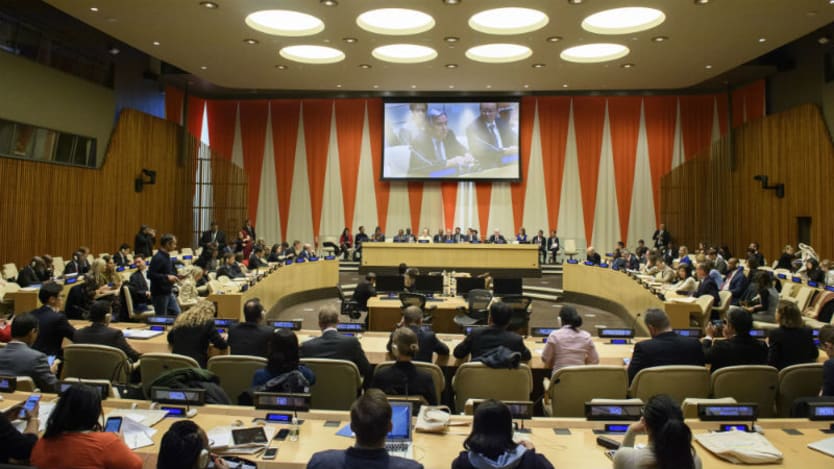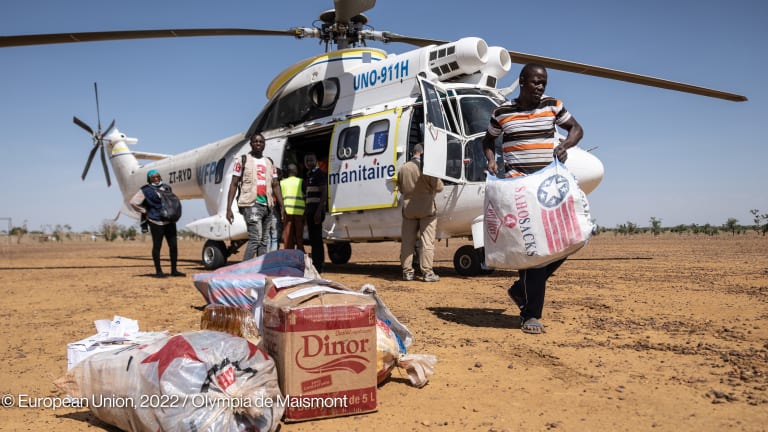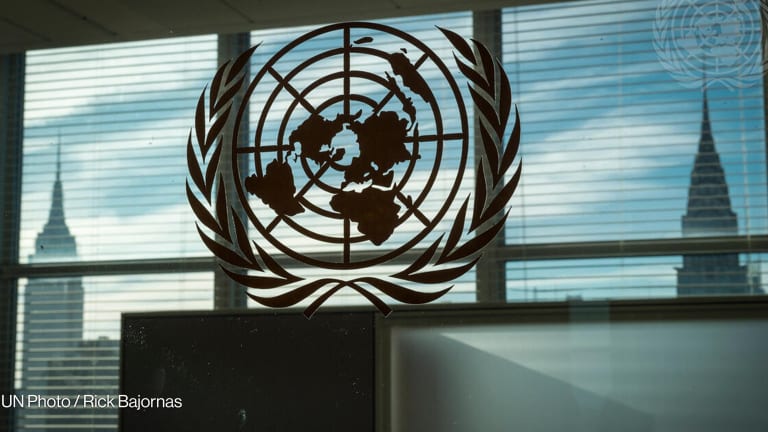
WASHINGTON — Mark Lowcock, head of the U.N. Office for the Coordination of Humanitarian Affairs, last week announced the largest ever disbursement from the Central Emergency Response Fund, the U.N. mechanism for allocating unearmarked humanitarian dollars.
The $125 million for 13 underfunded emergencies around the world will focus on four priority areas of gender-based violence and reproductive access, education, protection, and disabilities in Cameroon, Chad, Colombia, the Democratic Republic of the Congo, Djibouti, Haiti, Honduras, Madagascar, Niger, the occupied Palestinian territories, Tanzania, Uganda, and Ukraine.
“It’s as apolitical as possible and just provides the money where it’s needed most.”
— Lisa Doughten, chief of the U.N. Pooled Fund Management Branch, OCHA“This CERF allocation is a lifeline for millions of people caught up in crises across the globe where the level of suffering is alarmingly high, but the funding remains critically low,” Lowcock said in his announcement last week. “Without these funds, clean water, shelter, protection, nutritional support, food assistance, and other life necessities might never reach people in desperate need in time.”
As the number of humanitarian crises around the world continues to grow while official development assistance from traditional donors falls, CERF fills a key gap in international funding by disbursing funds in two ways: For protracted crises where needs remain acute but international attention has waned — like in the 13 countries for which Lowcock announced funding last week — CERF disburses money twice a year through its Underfunded Emergencies window.
Through its second window, Rapid Response, CERF allows the U.N. to quickly get money into the field during humanitarian emergencies any time of the year, such as in response to recent Cyclone Idai in southern Africa. On Wednesday, CERF released $2 million to provide humanitarian and medical assistance to people caught in escalating fighting in Libya, with Lowcock stressing that additional funding “is urgently needed.”
According to Lisa Doughten, who oversees operations at the CERF secretariat as chief of the U.N. Pooled Fund Management Branch at OCHA, about two-thirds of the fund’s allocations go to the Rapid Response fund, while the remaining third is for Underfunded Emergencies. Last year, the fund disbursed a record $500 million through U.N. agencies that can then channel funds to partners.
“CERF is kind of like the ambulance for the U.N., so if something happens and CERF can get there, give some first aid,” Doughten said. “What CERF does best is get there very early, get there fast, jump-start activities while the donors are kind of getting their act together, to provide funding to these agencies for the longer term. It’s that window of opportunity where time lost is lives lost.”
Doughten said that it is key that CERF’s flexibility allows U.N. agencies to coordinate in the field to determine how best to spend the money donated to the pooled fund. While this gives teams the flexibility they need to appropriately respond in an emergency situation, the unearmarked nature of CERF does require it to turn away funds from countries that want to dictate where and how they will be spent.
“I’ve had some Gulf countries say, ‘if you provide this kind of allocation to the Syria crisis or to Yemen or whatever, then we’ll give you tens of millions, 20-some million dollars,’ but we can’t do that,” Doughten said.
The origins
CERF was approved in 2005 and started operating in 2006 after the U.N. recognized an imbalance in funding for crises around the world that saw natural disasters like the 2004 Indian Ocean tsunami receive overwhelming funding while Darfur remained underfunded.
CERF had previously been a $50 million loan facility, but recognition that money must be disbursed quicker saw the General Assembly morph it into a $450 million grant facility that could meet needs of a crisis whenever or wherever it happened.
Emergency response funds go out within 24 hours, but U.N. agencies can start spending the money out of their reserves as soon as an announcement has been made because they know additional funds are on their way, Doughten said.
“It’s as apolitical as possible and just provides the money where it’s needed most,” Doughten said. “That’s really what the donors like best. They can always fund the agencies separately and they do, and it’s important that they do. But it’s this early funding that makes it important.”
There are 50 states that both donate and receive funds from CERF, while over 120 countries have given to the fund since it became operational in 2006. OCHA doesn’t need to have a presence in a country for it to be eligible for a disbursement, Doughten said, and any country can submit an application.
Submitted applications are reviewed by the CERF secretariat, which determines an allocation amount based on country context, capacity, and level of needs. Lowcock manages the fund on behalf of the secretary-general and is the ultimate authority on how much each country will get.
Underfunded crises receive disbursements based on the CERF index, which analyzes the risk and vulnerability of a crisis, and looks at the current funding landscape. For example, if there has just been a large pledging conference for Yemen, Doughten said, the country would not meet the criteria for receiving CERF funds from the underfunded window.
“They’re the ones where the funding is low, but the vulnerability and risk levels are very high,” Doughten said. “The idea of the underfunded [window] is both that it will kick-start and provide and fill some gaps in these underfunded crises, but also that shines a spotlight on the crises so that other donors say, ‘oh, look at this, the U.N. said that these are the most underfunded, let’s also add additional funding to those.’”
Diversifying funders
CERF is working to identify ways to diversify its donor base from U.N. member countries to foundations, philanthropies, and individual donors. Doughten referenced a recent appeal from the fund for Cyclone Idai, which raised over $100,000 after making the rounds on social media Market analysis has shown that digital fundraising platforms can be very successful, she noted.
CERF would also like to target corporations and high net worth individuals. It received a multiyear allocation from a family foundation in Oman in 2017, which Doughten said was “quite significant to us as a diversification of the donor base from just plain member states.”
“We don’t get very much private sector [funding]. That’s something that we’re looking into,” Doughten said. “But it looks like that’s probably not the best target, the best return on investment for us because we just don’t have the capacity to do the relationship management that is needed.”
The United Kingdom, Sweden, Norway, the Netherlands, and Germany are the top five all-time donors to CERF. Although the United States helped establish CERF as a grant-making facility with $10 million when it began, it has not given the fund any money for the last two years. Doughten said it is common that countries’ funding priorities change as their leaders change, and the U.S. in particular often wants a larger say in how its aid dollars will be spent.
“The U.S. has significant field teams on the ground. They do like to fund directly whoever they’re going to fund because they want to be able to ensure the accountability and follow the dollar,” Doughten said. “And of course they’ve got the political lens on top of that.”
In 2016, U.N. Secretary-General António Guterres called for CERF to grow from $450 million to a $1 billion grant fund to help more adequately meet needs around the world. The General Assembly endorsed the plan, but donations have not yet matched the call.
“Obviously the needs overwhelm the entire humanitarian community and it’s very difficult to fund,” Doughten said. “The money is growing every year, but there’s always a need for more.”








